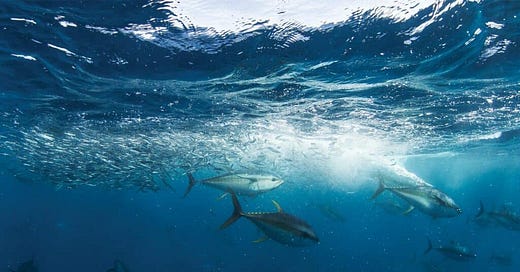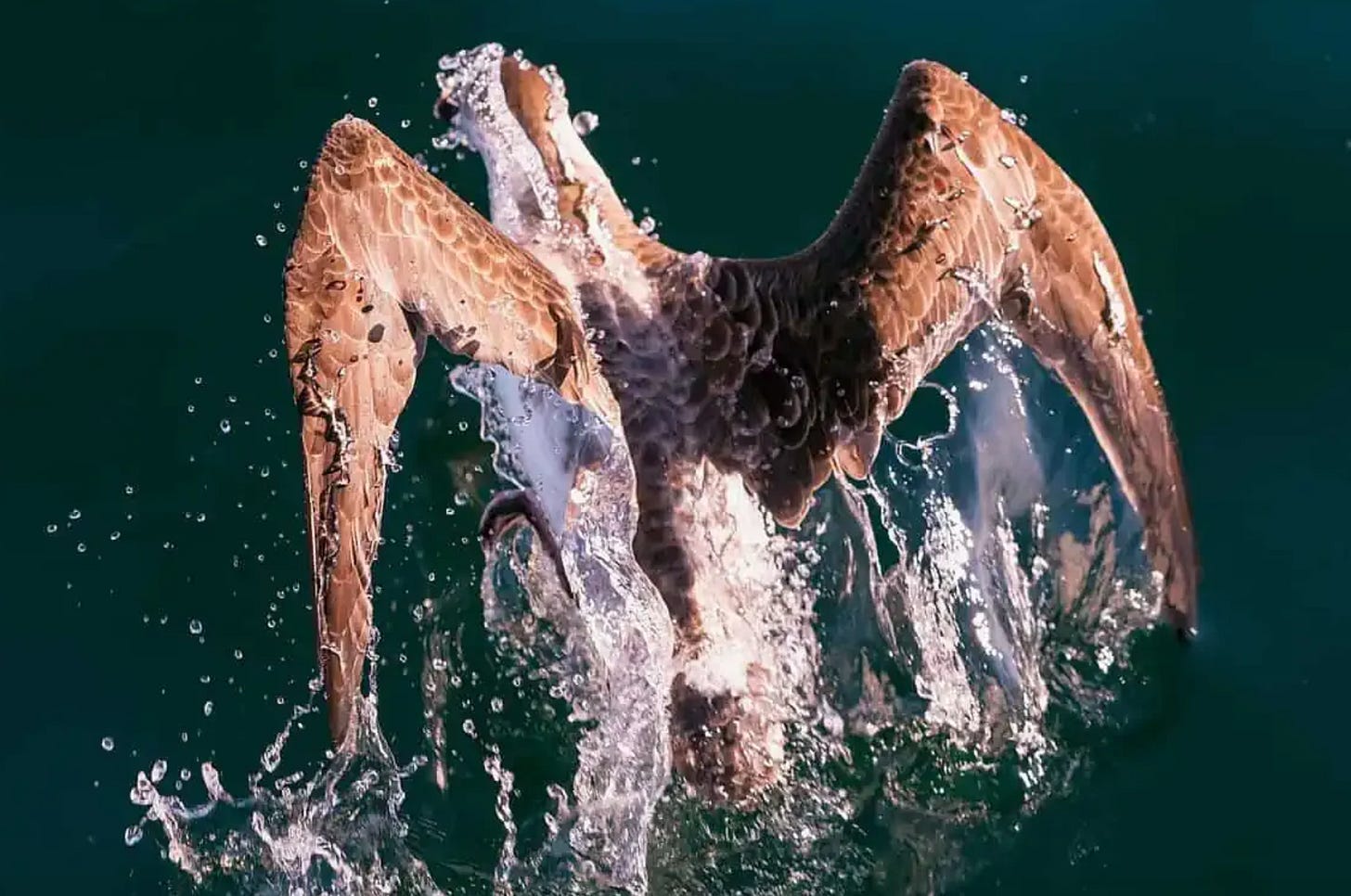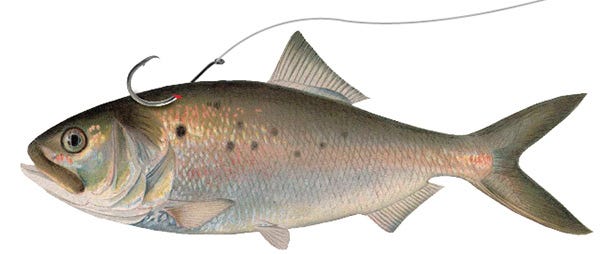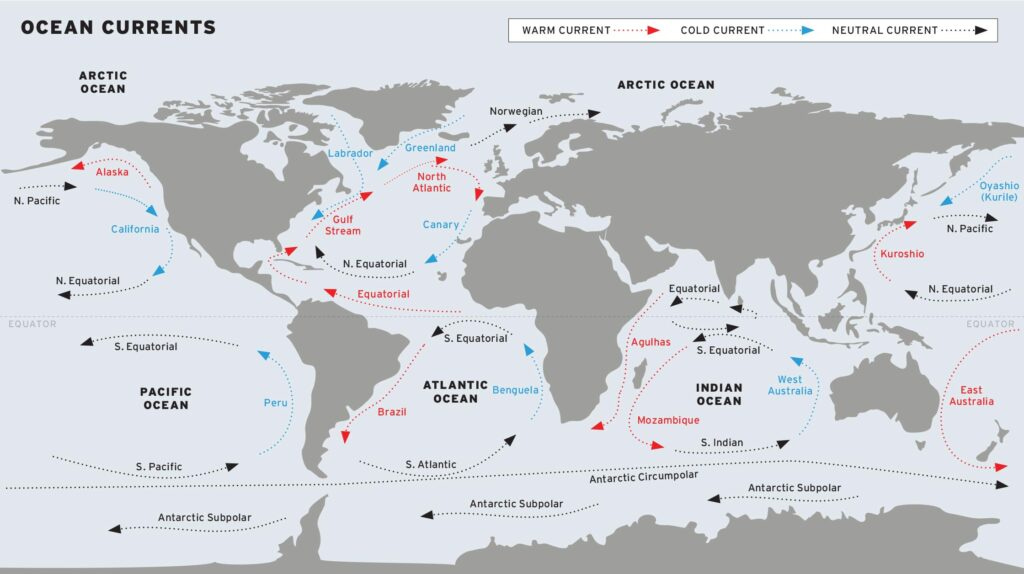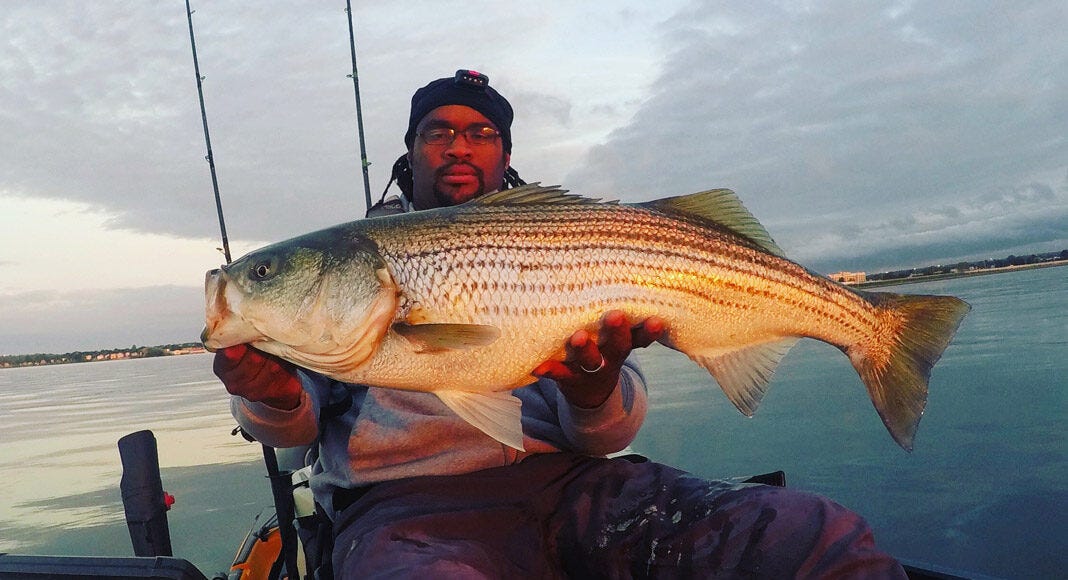The maritime rule of salvage has its origin in Roman law, which dictates that one who preserves or improves upon the misplaced property of another is owed compensation, even if the service was not requested. Let’s get out the internet trawler and get to work…
🎙️| Aclassic Podcast: Saltwater Stories - Tuna Junkies —> Billy Hayes and James Kuhl jump on the podcast to talk all things bluefin, and it’s full chaos from the start.
🎥 | Tuna Junkies: First Blood
🎥 | How Fish See & Hear - Parson’s Perspective
Fishing Reports | OnTheWater - FishermanMag - HullTruth - SOL
The Tuna Seminar 2025 - Part One
釣りにいこう - I suppose there are few places more historically relevant than Tokyo to be reporting in on the kick-off of the Northeast Tuna fishing season. After all, it’s been roughly half a century since Kuniaki Takahashi, the former president of Japan Airlines, with the help of several Boston-area wholesalers, shaped what is the modern supply chain for sushi-grade tuna.
Timing-wise, over the last 7-8 years at least, its usually been a decent bet that things begin to ramp-up sometime between the Strawberry Moon (June 11th) and the Summer Solstice (June 20th), so we’re theoretically in the home stretch.
As one of my favorites Tuna tomes ‘Giant Bluefin’ by Douglas Whynott (1995) suggests, Tuna species exhibit surprisingly sophisticated capacity for knowledge, using environmental cues and social memory to make migratory decisions. Generations of fish learn through observation and interaction, and have demonstrated the ability for return to areas of prior feeding success, largely on the basis of celestial navigation and chemical (lipid / oil) stimuli.
Early-Season Pathways —> Our mental model of the northern BFT migration pivots around a point roughly 100-miles to our East, George’s Bank. Whether the initial ‘push’ is largely resident fish or migrators (from way east or south), your guess is as good as mine. From the looks of it, the 2025 pattern could see school BFT move in ‘from the East’, following their larger-model brethren that have already begun to filter in from the depths of Wilkinson Basin. This was the case in 2018-2019, 2022 and very briefly in 2023-2024.
Given the proliferation of Bunker in our waters, as well as notable (86%) decline in commercial pressure on Herring this year, one can only hope the younger year-classes that have this route engrained in their collective memory will stay a bit longer that year’s prior. Still, every year has its own mysteries to disentangle, and 2025 will be no different, especially as scientists puzzle over new data that suggest the Gulf of Maine is seeing a colder, less salty deep water influx this year (after the heat-wave of years prior).
Where to Find Them - There’s been a lot of digital ink spilled on the subject of SST and its handywork out on The Edge. However, this cheap resource can be used closer to port as well. The rule of thumb is that tuna migrate the breaks. Transitions in temperature (60-68 is optimal for BFT) and clarity are where bait and gamefish congregate. As several Captains have voiced over the years, tuna don’t always care about the break, but bait certainly does. To get the most accurate look at “true water” temps, you want to use a single sat shot taken in the morning (2AM - 6AM), before solar heating has taken effect.
The Brocial Network - We’ve interviewed quite a few accomplished tuna captains over the years, and the majority attest to this recipe for success: one part local knowledge, one part effort, and one part network. The latter third comes with a lot of unwritten rules of engagement, but the simplest one is that intel is always a two-way street. There are a lot of creative ways to build a rolodex of trusted sources, but the easiest way to get left on read is to ask for something with nothing to offer in return.
Follow the Life - Bird, whale and bait sign, when properly interpreted, can be the difference between a banner day and returning to the dock with a few blurry sunrise pics. Here are some keys to amateur ornithology…
Shearwaters (in most cases) are the best clue bird. If you see shearwaters flapping their wings, occasionally dipping, walking on, or looking into the water, they are likely feeding.
If they aren't feeding they are typically "rafted up", which can mean they either just got done feeding or are waiting around to get started.
Oftentimes you can discern ‘traveling’ from ‘suspicious’ birds by the speed of their wing beats: Long and slow wing beats suggest they are looking for other birds or perhaps a new feeding area. On the other hand, erratic flight usually means a food-source is nearby.
“Slicks & Chicks” AKA Storm Petrels, are beacons of underwater mayhem, as their excellent sense of smell helps them find & feed on the oily remnants of predation below.
Whales & Tuna - While once considered a near-guaranteed hookup, fishing in close proximity to Humpback whales no longer seems to carry a sense of instant gratification. I’m of the opinion that Bluefin actually share more dietary similarities (sand eels, herring) to Minke whales, and so I actively search for those species instead of larger whales (despite how awesome they are).
Screen-time - A working knowledge of sonar technology is key. When utilized, the size, orientation and patterns in your images can tell you many things beyond a tuna’s depth and size: feeding patterns, attitude/competitiveness, direction of travel, and response to presentations. For tuna application, you are searching for both soft (sandeels, herring, squid, thermoclines) as well as hard returns (tuna, shell beds, wrecks, rock piles and bottom composition changes), so you’ll need to use trial-and-error to find sonar settings (gain, contrast, color palette, frequency) that can do it all. So, what are we looking for?
School corralling sandeels near the surface, not a bad time to blindcast a stickbait, slow-roll a plastic or slow-pitch mid-column.
A jumbo lurking just off the bottom. Notice the ‘grainier’ image quality due to a 200kHz setting. Still plenty good enough to mark slobs.
A wolfpack of shmediums inspecting a RonZ at 40ft (horizontal line).
School tuna squeezing bait toward the bottom. The more vertical orientation of some streaks suggest more active/competitive fish. Always a great sign.
A pod of giants holding off a ledge. Perfect time to set a down bait above their heads.
A pack of medium-sized BFT following a jig down to the bottom. When multiple fish start reacting to your presentation, get ready. Keep it in their face!
Tune in for part II next week as we get into rigging and tactics…
Oldie but Goodie: The Pogy Principle (OnTheWater) - “Stripers, especially the calorie-conscious big babies, will not be galloping in stride with the posse, as this simply uses up too much energy. Rather, they will be shadowing the massacre but sticking to structure and making occasional sorties out to the mayhem to pick up scraps. I can’t begin to tell you how often we’ve left behind dozens of boats hauling blues and an errant bass to discreetly slip away toward a nearby upwelling, channel edge or other piece of structure and found the stripers stacked like the proverbial cordwood. It’s a simple lesson in ichthyology: bass aren’t built for competing with blues in open water for big baitfish such as pogies, but they are opportunistic and will prowl along nearby structure, and it is there that you’ll find more bass and fewer bluefish.”
How Ocean Currents and Eddies Fuel the World’s Most Productive Sport Fisheries (MarlinMag) - “Although canyons, humps and ledges are the fixed bathymetric features that anglers commonly target, it is the highly dynamic ocean conditions passing by these features that constantly shift the ideal fishing grounds where billfish and tunas can be found in abundance. It’s no secret that by using near real-time satellite imagery, we can identify conditions that offshore anglers everywhere recognize as potential bonanzas, including where warm and clear, often “purple,” water approaches the continental shelf and yields major temperature and color breaks in the environment. Shifts in these fronts by just a few miles can make or break a fishing trip and alter a boat’s chance at success from one day to the next. For this reason, anglers in tune with the changing conditions religiously check sea-surface temperature and chlorophyll maps ahead of trips and try to pick the best spots for when they will be arriving at the canyons rather than, for example, heading out to the nearest canyon and then listening to radio chatter for information on where to try next.”
What’s The Best Night Bite? Striped Bass Versus Largemouth (KayakAnglerMag) - “Largemouth bass live in freshwater and striped bass mostly live in saltwater, but that’s where the differences end. Both fish have a lot in common. Stripers and largies are aggressive, versatile and not too smart. They love structure, eat almost anything and live almost everywhere. Best of all, striped bass and largemouth bass love a midnight snack. To extend a fishing day into night, we tapped two after-hours bass anglers for their night moves.”
Looking for more information about a product after reading The Weekly Salvage?
Try using GearSay, the first generative AI tool specifically tailored to help you find the right fishing tackle.
Thanks for reading The Weekly Salvage, until next week!
Have feedback or want to learn more?
Reach out to us on IG @Blowin_We_Goin

